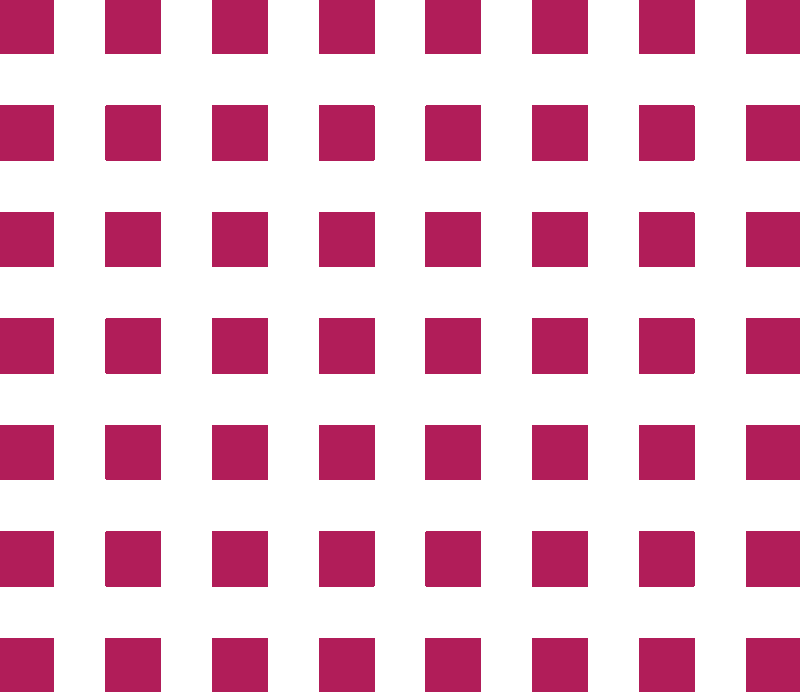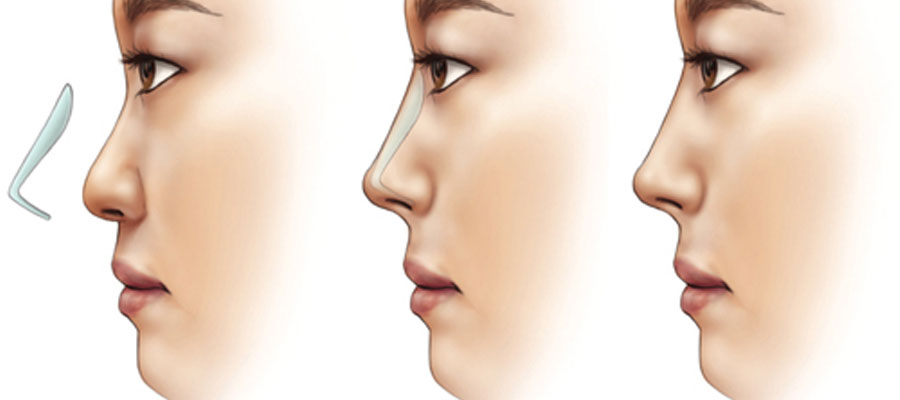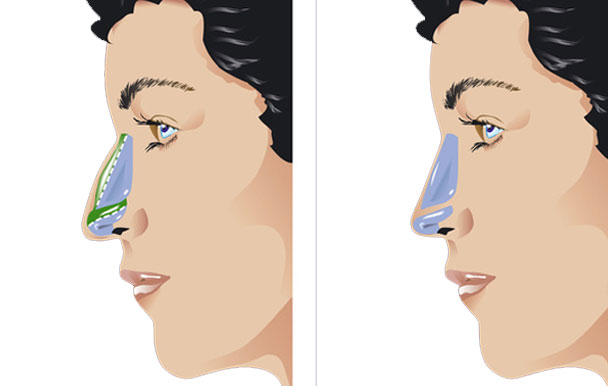Who Requires Rhinoplasty Treatment:
People who may consider rhinoplasty treatment include:
- Very Large and Very Small Nose.
- Deviated Nose
- Hump Nose
- Broad Nostril
- Someone Who Does Not Like His /her Nose


Drop Your Number here
Rhinoplasty, commonly known as a “nose job,” is a surgical procedure designed to enhance both the appearance and function of the nose. As the central feature of the face, the nose plays a crucial role in facial balance and aesthetics. Rhinoplasty is sought by individuals looking to refine nasal shape, correct a hump, reshape a bulbous tip, reduce wide nostrils, or adjust overall nose size. Beyond cosmetic improvements, this procedure can also address medical concerns such as a deviated septum or other structural issues that cause breathing problems. With Rhinoplasty Treatment in Jaipur, patients can achieve a natural-looking, balanced appearance while improving nasal function under the care of a skilled rhinoplasty surgeon.
The upper portion of the structure of the nose is bone, and the lower portion is cartilage. Rhinoplasty can change bone, cartilage, skin or all three. Talk to our expert plastic surgeon, Dr. Vikas Gupta about whether rhinoplasty is appropriate for you and what it can achieve.
People who may consider rhinoplasty treatment include:

Rhinoplasty Treatment requires local anesthesia, general or sedation, dependent on how complicated your procedure is as well as what the surgeon would prefer. Talk to the Dr. Vikas Gupta before surgery the type of anesthesia that is the most suitable for your needs.
Drop Your Number here
The cost of Rhinoplasty in Jaipur typically starts from Rs. 75,000 and can go up to Rs. 1,00,000, depending on the procedure type, complexity, surgeon expertise, and hospital facilities. Cosmetic or functional corrections may vary in pricing. Expert Rhinoplasty Treatment offers patients both aesthetic and functional benefits, making it a valuable investment in appearance and confidence.
After the rhinoplasty surgery in Jaipur you need to rest in bed with your head raised
higher than your chest, to reduce bleeding and swelling. Your nose may be congested because of
swelling or from the splints placed inside your nose during surgery.
In most cases, the internal dressings remain in place for one to seven days after surgery. Your
doctor also tapes a splint to your nose for protection and support. It’s usually in place for about
one week.
Slight bleeding and drainage of mucus and old blood are common for a few days after the surgery or
after removing the dressing. Your doctor may place a "drip pad" — a small piece of gauze held in
place with tape — under your nose to absorb drainage. Change the gauze as directed by your doctor.
Don’t place the drip pad tight against your nose.
To further lower the chances of bleeding and swelling, your doctor may ask that you follow
precautions for several weeks after rhinoplasty treatment. Your doctor may ask you to:
Rhinoplasty is one of the most intricate cosmetic procedures, where even minor adjustments can impact both appearance and function. Choosing an experienced rhinoplasty surgeon in Jaipur is crucial for achieving natural, balanced results. A specialized surgeon combines artistic precision with medical expertise, offering safer procedures, faster recovery, and results that enhance both facial harmony and self-confidence. With advanced techniques and a personalized approach, Rhinoplasty Treatment in Jaipur ensures patients feel satisfied for years to come.
My self Mr lokendra Singh shekhawat visited to Dr vikas Gupta for tattoo removal from my both hands.. before visiting him I consultant many plastic surgeons but I was not satisfied..but when I visited Dr vikas Gupta, from the first consultation, I was sure enough to get my surgery done here...
Dr Vikash Gupta is nice cosmetic surgeon. He explained everything in detail of the issue and then prescribe the medicines. He is really cooperative and supportive.
I had a surgery of my finger and find very friendly and cooperative environment with this organization. My finger was totally broken away from my leg due to an accident but now I'm very fine with finger. Dr. Vikas gupta, such an amazing mentor giving such good advices. Very good experience with you. Thanks a lot.
Visited to Dr Vikas Gupta for surgery. Fully satisfied with the surgery, post surgery Dressing, timing, cost and understanding nature of Doctor. I consult 4 Doctors of jaipur and 3 Doctors of Delhi before coming NV Aesthetic and Dental Clinic and finally reach the right place. Highly Recommended to Visit.